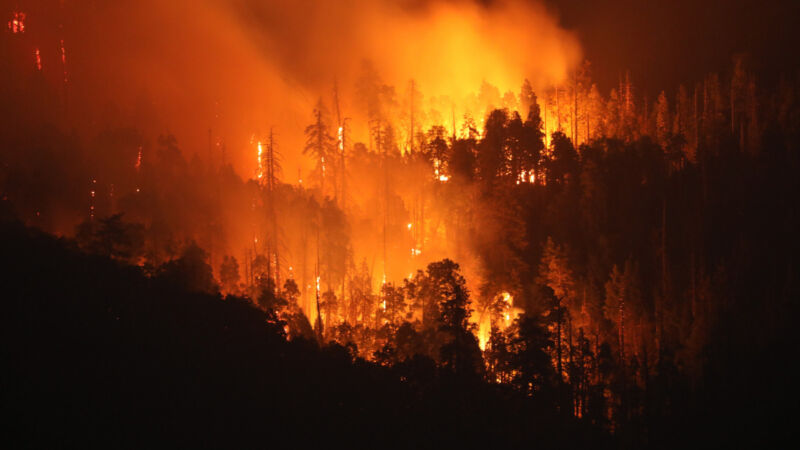
reader comments
27 with
California’s main firefighting agency, Cal Fire, is training AI models to detect visual signs of wildfires using a network of 1,039 high-definition cameras, reports The New York Times and the Los Angeles Times. When it sees signs of smoke, it quickly warns firefighters of emerging threats. During the pilot program, the system has already detected 77 wildfires before dispatch centers received 911 calls—about a 40 percent success rate, according to the NYT.
Traditionally, Cal Fire detects emerging wildfires by relying on the same network of over 1,000 mountaintop cameras monitored by humans, who look out for signs of smoke. But it’s tedious and tiring work. Phillip SeLegue, the staff chief of intelligence for Cal Fire, told the NYT that the new AI system has not only improved response times but also identified some fires early, allowing those blazes to be tackled while still being a manageable size.
However, the technology is not without limitations. It can only detect fires that are visible to its network of cameras, and human intervention is still required to confirm the AI model’s alerts. Engineers from DigitalPath, the California-based company responsible for creating the software, have been manually vetting each fire the AI identifies. The process has been challenging, with many false positives from fog, haze, dust kicked up from tractors, and steam from geothermal plants, according to Ethan Higgins, a chief architect of the software. “You wouldn’t believe how many things look like smoke,” Higgins told the NYT.
Fireguard, which uses classified spy satellites, drones, and other aircraft to detect fires. Even with early drawbacks like false positives, Neal Driscoll, a leader of the Cal Fire AI project, told the NYT that the AI program’s ultimate success will be measured by the fires that the public will never hear about, as they will be quickly extinguished while still small.
This year has been relatively less destructive in terms of wildfires, compared to previous years: Cal Fire reported 4,792 wildfires so far, which is lower than the five-year average of 5,422 for the summer months. Even so, that doesn’t make any wildfire less devastating when it spirals out of control.





